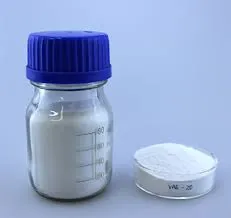
តុលា . 11, 2024 00:03 Back to list
Hydroxyethylcellulose Derivatives for Enhanced Performance in Various Applications
Hydroxyethylcellulose (HEC) is a non-ionic, water-soluble polymer derived from cellulose, widely used in various industrial and consumer applications. Its unique properties make it a versatile ingredient, particularly in the realms of coatings, adhesives, personal care products, and pharmaceuticals.
One of the notable characteristics of hydroxyethylcellulose is its ability to form gels and viscous solutions when mixed with water, which contributes to the stability and texture of formulations. The rheological properties of HEC make it an excellent thickening and suspending agent, allowing for improved workflow and performance in products ranging from paints and coatings to shampoos and lotions. This thickening capability helps to enhance the end-user experience by providing a smooth and consistent application.
In the beauty and personal care industry, HEC is often employed in skincare products, hair care formulations, and cosmetics. Its ability to create a pleasing texture and enhance the spreadability of products makes it a favored choice among formulators. Moreover, due to its mildness, HEC is suitable for sensitive skin, reducing the risk of irritation that some synthetic thickeners might pose.
In pharmaceuticals, hydroxyethylcellulose is utilized as a binder and controlled-release agent in tablet formulations, ensuring that active ingredients are released in a regulated manner. This property is crucial for developing formulations that require precise dosing and longer-lasting effects. Additionally, HEC is often used as an excipient in various drug delivery systems, further highlighting its multifunctional capabilities.
hydroxyethylcellulose based

Another significant application of HEC lies in the construction industry, where it is used to enhance the performance of cement-based adhesives, grouts, and mortars. In this context, HEC not only improves workability but also enhances the adhesion and water retention of building materials, thus contributing to the overall durability and longevity of structures.
The sustainability aspect of hydroxyethylcellulose also adds to its appeal
. As a cellulose derivative, HEC is biodegradable and derived from renewable resources, aligning with the increasing demand for environmentally friendly products.In conclusion, hydroxyethylcellulose is a versatile polymer with a wide range of applications across numerous industries. Its thickening, binding, and suspending properties make it an essential component in various formulations, contributing to product stability, user experience, and sustainability. As consumer preferences continue to evolve towards greener alternatives, hydroxyethylcellulose is poised to play a vital role in future innovations.
-
Unlocking the Benefits of HPMC Products: A Gateway to Versatile Applications
NewsAug.07,2025
-
Tile Bonding Cellulose: The Key to Superior Adhesion and Durability
NewsAug.07,2025
-
Hydroxypropyl Methylcellulose Powder: The Versatile Component in Modern Pharmaceuticals
NewsAug.07,2025
-
Hydroxyethyl Cellulose: The Versatile Solution for Various Industries
NewsAug.07,2025
-
Hydroxyethyl Cellulose (HEC): The Versatile Polymer for Various Applications
NewsAug.07,2025
-
The Ultimate Guide to Mortar Bonding Agent
NewsAug.06,2025







